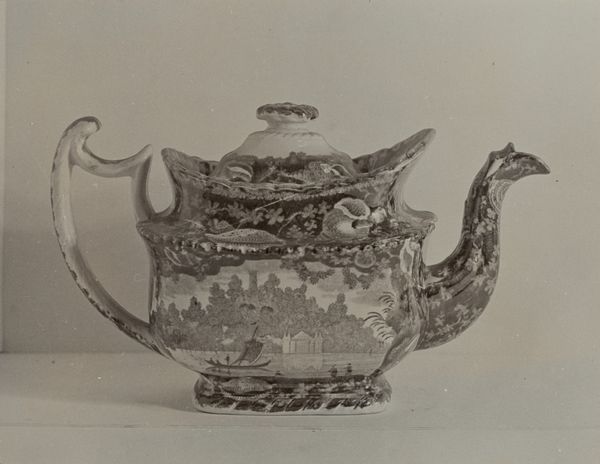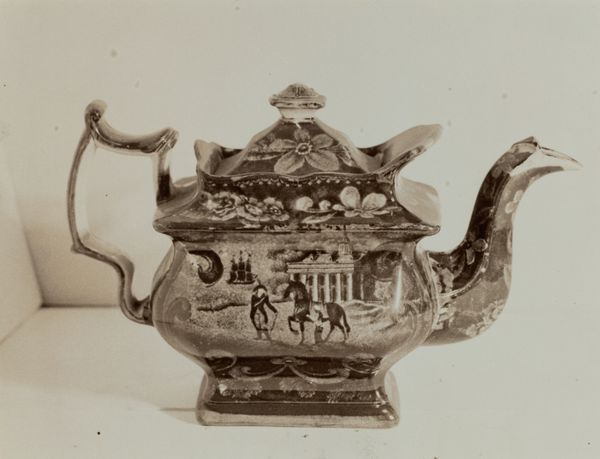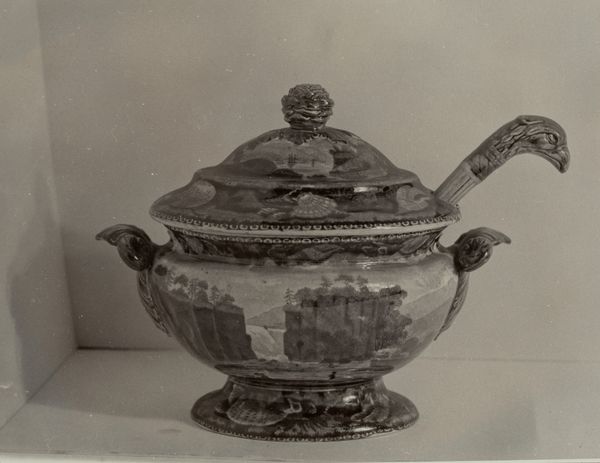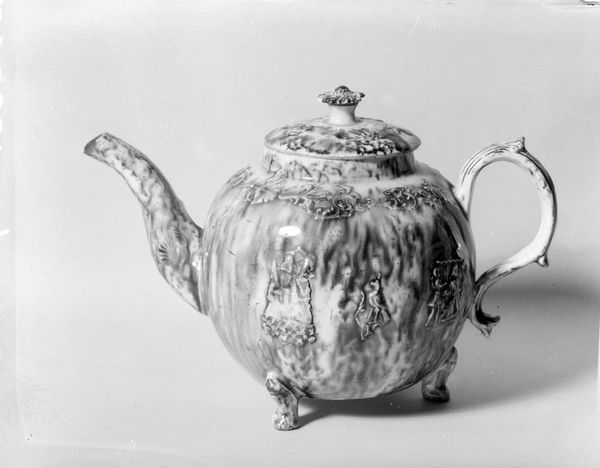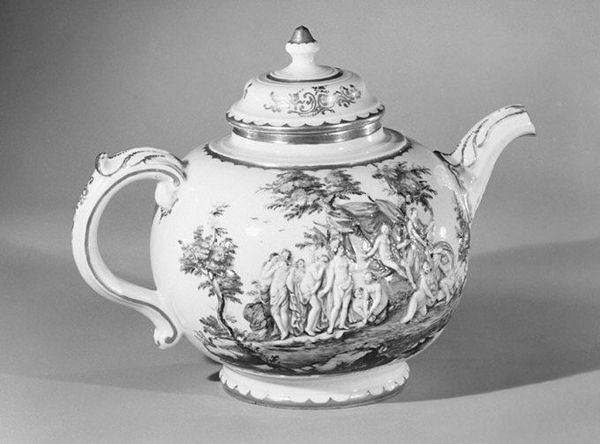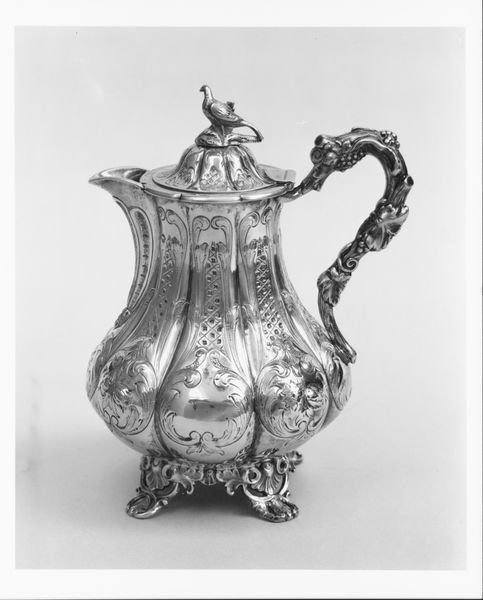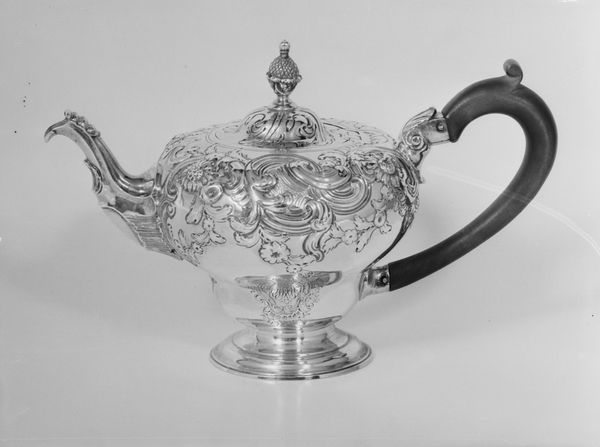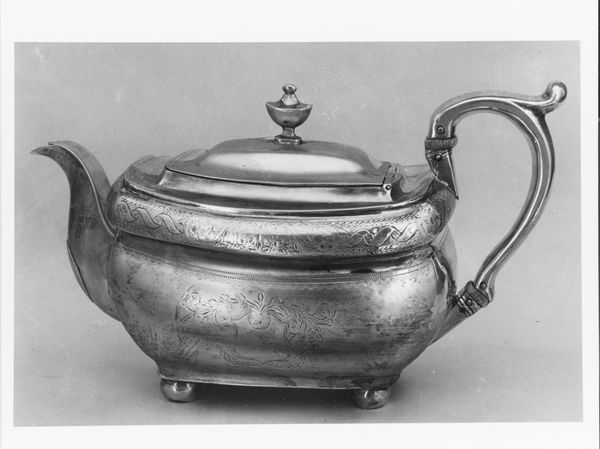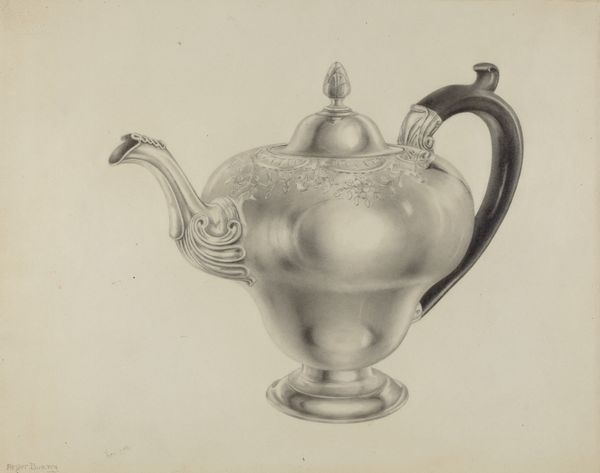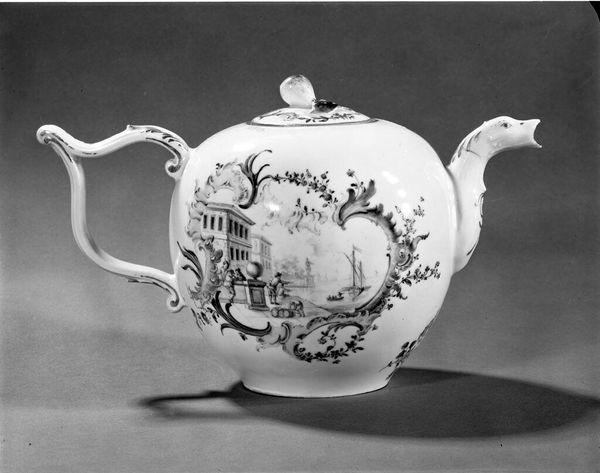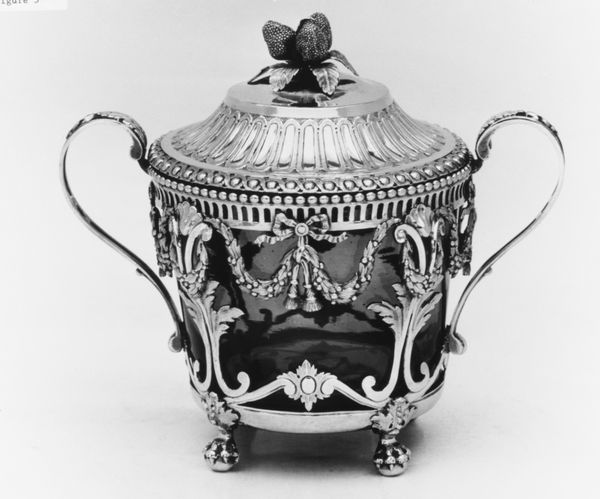
ceramic, earthenware, sculpture
#
sculpture
#
ceramic
#
earthenware
#
stoneware
#
sculpture
#
decorative-art
Dimensions: overall: 20.3 x 25.4 cm (8 x 10 in.)
Copyright: National Gallery of Art: CC0 1.0
Curator: We’re looking at a ceramic teapot crafted around 1936 by Helmut Hiatt. It's identified as the "Baltimore Almshouse" teapot and seems to be made of earthenware and possibly some stoneware elements as well. Editor: My first impression? It feels surprisingly…loaded. The almost monochromatic scheme and the architectural image create a mood of constrained dignity, but it's obviously meant for daily use, a tension of practicality and symbolism. Curator: Exactly! It's the confluence of decorative art and social context that makes it compelling. Placing an image of an almshouse, a place of last resort for the impoverished, on an everyday object transforms it into a potent commentary. Editor: It certainly raises questions. Was it meant as a criticism of the social welfare system? Or perhaps a celebration of civic responsibility? The date, placing it within the Depression era, makes it all the more evocative. What sort of discussions might this object provoke around a tea table? Curator: We can delve further, thinking about who commissioned it, who used it. Were they aware of the irony or social messaging baked into its design? And what about the role of almshouses historically— these institutions reflected evolving societal attitudes toward poverty and social responsibility. Editor: Thinking of it politically also invites us to look into imagery and social impact. How did the almshouse represent an implicit statement on civic care in Baltimore at the time? Curator: Ultimately, this teapot acts as a historical and sociological artifact. It reflects both Hiatt's individual artistic interpretation and broader societal narratives concerning obligation and poverty. Editor: Right, considering those elements transforms this piece from a mere decorative object into a provocative symbol, challenging us to re-evaluate our assumptions regarding social issues reflected in popular art.
Comments
No comments
Be the first to comment and join the conversation on the ultimate creative platform.
